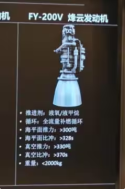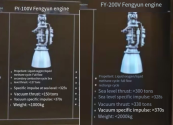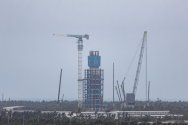You are using an out of date browser. It may not display this or other websites correctly.
You should upgrade or use an alternative browser.
You should upgrade or use an alternative browser.
China's Space Program Thread II
- Thread starter Blitzo
- Start date
Believe it or not, that's worse. Scaling production of the LM8 in 2020,2021,2022,2023 made sense when reusable rockets were still 4-5 years away, but what the point of increasing LM8 production and launches in 2025 when reusable rockets are on the horizon and hopefully less than a year away? Those new production facilities will just be wasted assets once someone manages to get a F9 clone launching weekly, which could happen as soon as early next year. The LM8 can't even be made reusable without a complete redesign. This is just horrible timing.LM8 Two large production facilities just completed last year in Tianjin and Hainan.
but yeah from this year we will see multiple LM8 rocket launches. especially improved LM8A.
last month first LM8A improved rocket took first flight. In 2025, the Long March-8 series is scheduled to carry out more than 10 launch missions, with the Long March-8A rocket set to execute 5 to 6 of those missions, the academy disclosed.
Last edited:
So, sea-level TWR of >127 to vacuum of >150 for FY-100V and sea-level TWR of >150 and vacuum of >165 for FY-200VView attachment 149081View attachment 149082
Jiuzhou Yunjian has released the specifications of two new engines.
View attachment 149083
LM-8 has its own launchpad at Wenchang, the other projects do not.Believe it or not, that's worse. Scaling production of the LM8 in 2020,2021,2022,2023 made sense when reusable rockets were still 4-5 years away, but what the point of increasing LM8 production and launches in 2025 when reusable rockets are on the horizon and hopefully less than a year away? Those new production facilities will just be wasted assets once someone manages to get a F9 clone launching weekly, which could happen as soon as early next year. The LM8 can't even be made reusable without a complete redesign. This is just horrible timing.
Those new production facilities will just be wasted assets once someone manages to get a F9 clone launching weekly, which could happen as soon as early next year. The LM8 can't even be made reusable without a complete redesign. This is just horrible timing.
A reusable rocket hasn't yet flown to orbit, and it will take whichever company first achieved that many years to scale up to 1/week cadence.
Even besides that, are you arguing that the LM8 facilities shouldn't have been built at all? If they put all the eggs in your reusable private launchers basket, they'd be doing nothing in the meantime other than sitting around and waiting for the dream to be realized. Better to simultaneously invest in LM8+reusable.
It's said to be completed by the end of 2026. TBH later than my expectation.View attachment 149105
A nice shot of LC-301 at WSLS.
A reusable rocket hasn't yet flown to orbit, and it will take whichever company first achieved that many years to scale up to 1/week cadence.
Even besides that, are you arguing that the LM8 facilities shouldn't have been built at all? If they put all the eggs in your reusable private launchers basket, they'd be doing nothing in the meantime other than sitting around and waiting for the dream to be realized. Better to simultaneously invest in LM8+reusable.
Ideal scenario would've been to take the CZ-5 and YF-100 technologies and introduced CZ-10A earlier (perhaps as a variant of the 5) and matured it like F9. But unfortunately as I've pointed out before, CZ-10 uses quite cutting-edge manufacturing that was not available to chinese spaceflight until quite recently - gimbaled system, tank design, alloys and latest FSW techniques (to increase TWR, ISP and reduce dry mass)
and deep throttling engines for reusable rockets.
So yes you're quite right - they can't wait for these technologies to mature and have to pursue projects in parallel.
Last edited:
On April 1, 2025, at 12:00, the Long March 2D carrier rocket successfully launched the Satellite Internet Technology Experiment Satellite from the Jiuquan Satellite Launch Center, accurately placing it into its designated orbit. The launch mission was a complete success. This was the 97th launch of the Long March 2D carrier rocket and the 567th launch of the Long March series carrier rockets.
The Long March 2D carrier rocket used in this mission is a two-stage, normal-temperature liquid-fueled launch vehicle developed by the Eighth Academy. This mission successfully applied a 3.8-meter-diameter composite material payload fairing, achieving three major breakthroughs compared to metal fairings of the same size: effectively expanding the satellite payload envelope space, significantly enhancing mission adaptability; greatly improving electromagnetic wave penetration performance, ensuring the reliability of wireless communication links; and featuring a smooth and easy-to-clean inner surface, meeting the high cleanliness requirements of the aerospace environment.
The Satellite Internet Technology Experiment Satellite is primarily used for technical experiments and verification in areas such as direct broadband connection between mobile phones and satellites, as well as the integration of space and ground networks.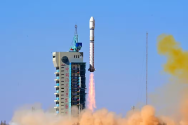
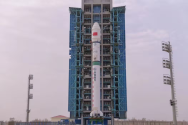
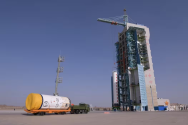
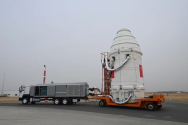

The Long March 2D carrier rocket used in this mission is a two-stage, normal-temperature liquid-fueled launch vehicle developed by the Eighth Academy. This mission successfully applied a 3.8-meter-diameter composite material payload fairing, achieving three major breakthroughs compared to metal fairings of the same size: effectively expanding the satellite payload envelope space, significantly enhancing mission adaptability; greatly improving electromagnetic wave penetration performance, ensuring the reliability of wireless communication links; and featuring a smooth and easy-to-clean inner surface, meeting the high cleanliness requirements of the aerospace environment.
The Satellite Internet Technology Experiment Satellite is primarily used for technical experiments and verification in areas such as direct broadband connection between mobile phones and satellites, as well as the integration of space and ground networks.







